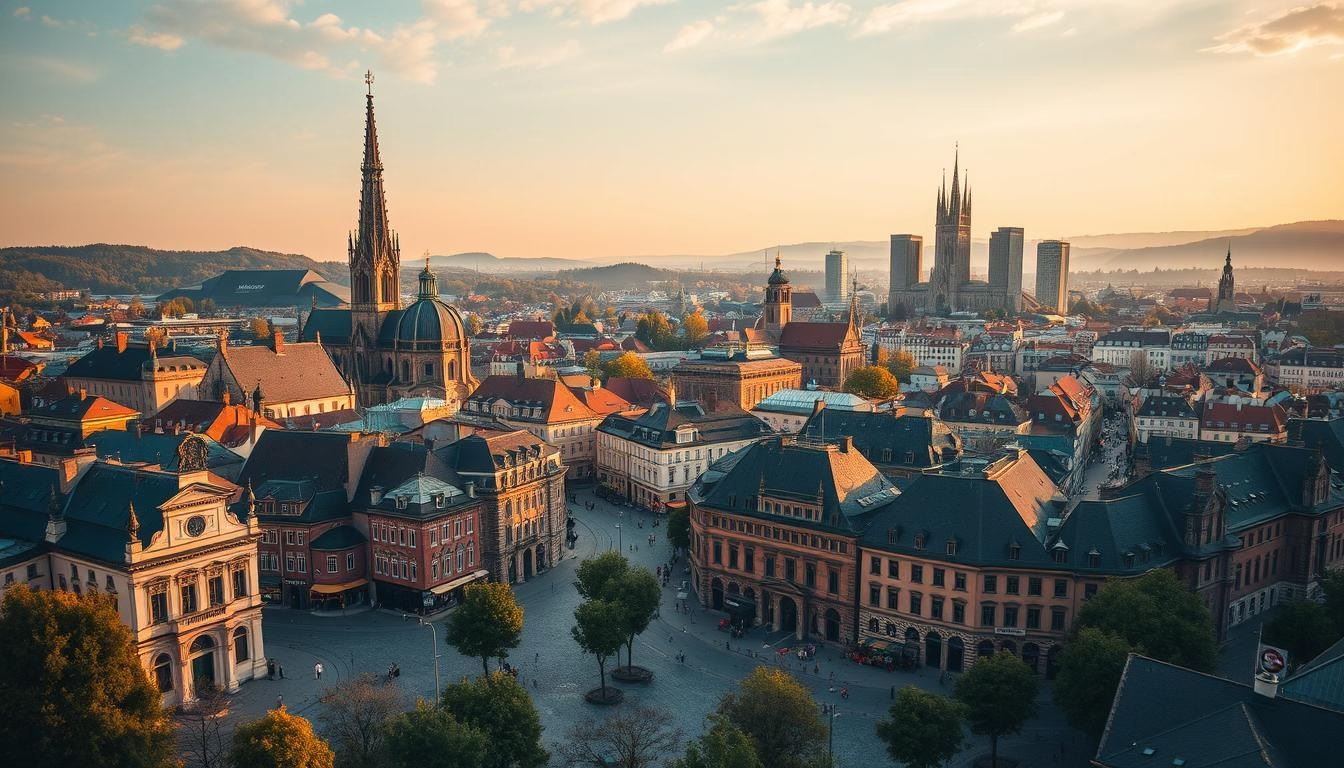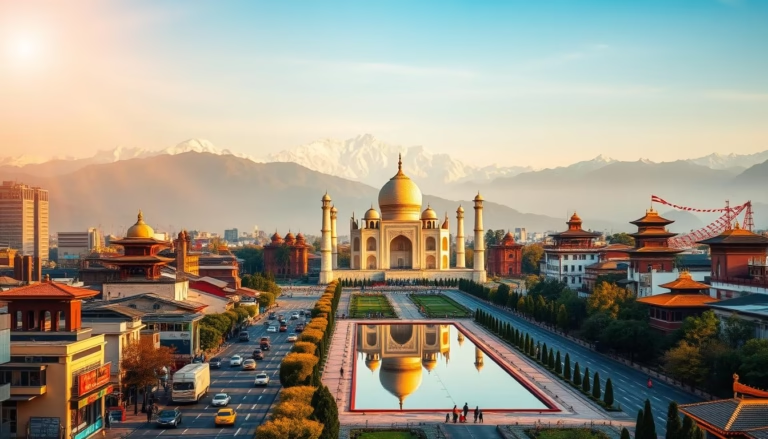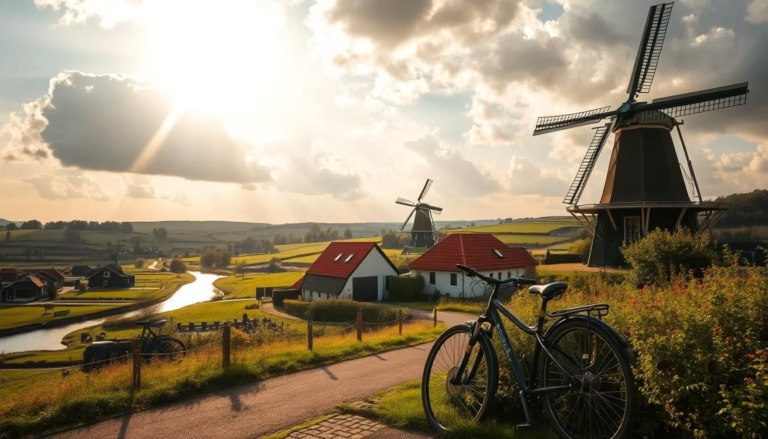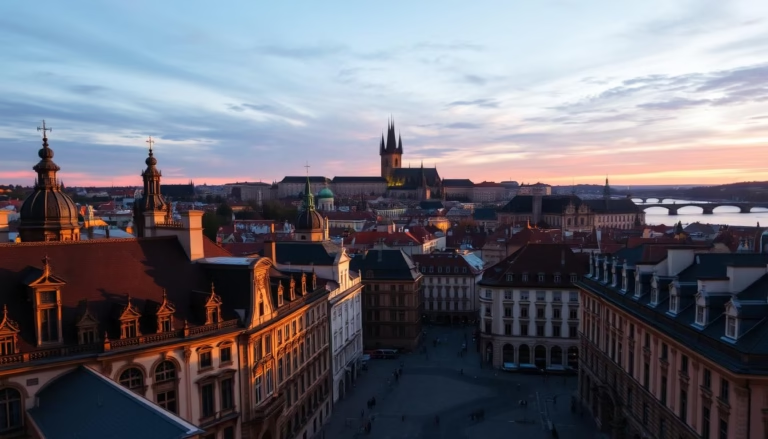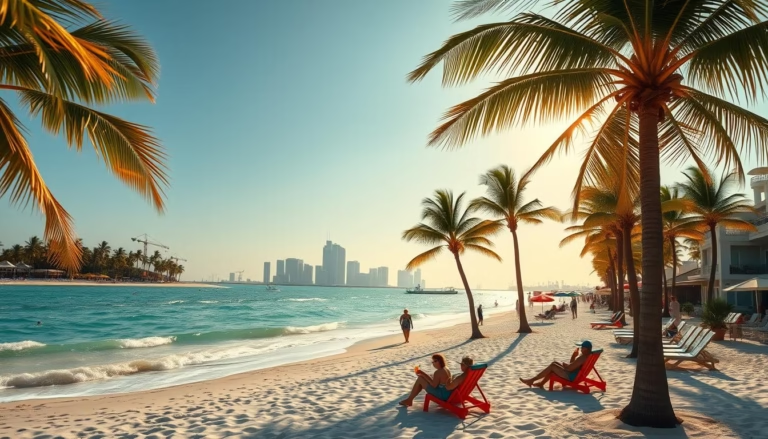Top Travel Guide: Best Cities to Visit in Germany
Did you know Germany’s rail network stretches over 24,000 miles—enough to circle the Earth? This sprawling system connects over 1,300 urban centers, making it effortless to explore medieval towns, modern hubs, and everything in between. Whether you’re drawn to iconic landmarks or hidden cultural gems, this country packs endless surprises into every corner.
From the buzzing energy of Berlin to the fairy-tale charm of smaller towns, travelers find a perfect mix of old and new. Efficient trains and airports let you hop between destinations quickly, so you can experience more during your trip. Even better, you’ll meet welcoming locals eager to share their traditions and stories.
Our detailed guide highlights destinations that blend history with innovation. Imagine tasting fresh pretzels in a 500-year-old brewery or dancing in a cutting-edge nightclub beneath ancient castle walls. Germany’s diversity ensures every traveler finds their ideal adventure.
Key Takeaways
- Germany’s transportation network simplifies multi-city itineraries
- Destinations range from UNESCO sites to trendy urban hotspots
- Local festivals and cuisine offer authentic cultural immersion
- Compact cities allow walkable exploration of major attractions
- Seasonal events like Christmas markets enhance travel experiences
Exploring the Vibrant Culture of Berlin
Where else can you sip coffee in a retro cafe before exploring ancient artifacts just minutes apart? Berlin thrives on contrasts, blending gritty history with modern creativity. Locals joke that you need three lifetimes to experience everything—but smart planning lets you taste its essence in days.
Caffeine and Culture Collide
Start mornings at Café Hüftengold Foodshop, where rainbow-hued chairs and avocado toast fuel people-watching sessions. Join Berlin on Bike tours to pedal past Cold War sites and graffiti-covered bridges—their 3.5-hour routes pack centuries of stories. Thirsty? Sandemans’ beer tours reveal brewing secrets in historic cellars beneath the city.
Where History Meets Innovation
The Berlin Cathedral dome offers panoramic views, but the real treasures lie across the street. The museum complex here houses the Pergamon’s jaw-dropping Ishtar Gate and Islamic art spanning 1,400 years. Need a break? Monsieur Vuong serves pho so authentic you’ll forget you’re in Europe.
As night falls, Cosmic Comedy proves language isn’t a barrier to laughter—their English stand-up shows pair punchlines with wood-fired pizza. Whether you’re here for art, food, or underground clubs, Berlin reshapes itself with every visit.
Discovering Nuremberg’s Medieval Charm
Step into a living storybook where cobblestone streets wind past half-timbered houses adorned with flower boxes. Nuremberg’s skyline bristles with church spires and castle towers that have watched over the city since the Holy Roman Empire. This urban time capsule balances historic preservation with modern comforts—you’ll find free Wi-Fi near 14th-century fountains.
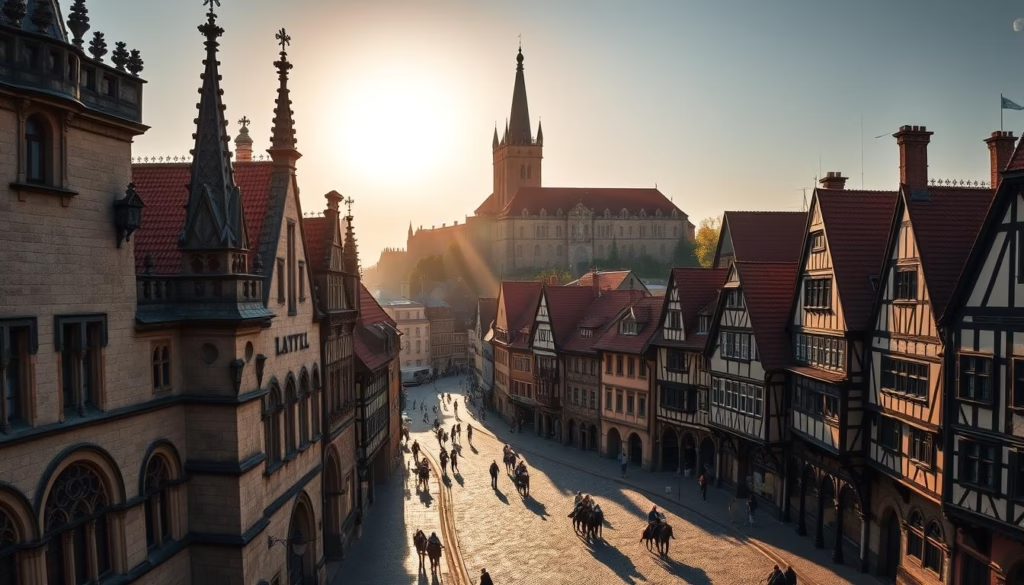
Festive Flavors and Timeless Traditions
When winter arrives, the scent of cinnamon and roasted almonds leads visitors to Christkindlesmarkt, Germany’s oldest Christmas market. Artisans sell hand-carved nutcrackers beside stalls offering Drei im Weckla—juicy pork sausages served in crusty rolls. Warm up with mugs of Feuerzangenbowle, a rum-spiked punch that’s practically liquid holiday spirit.
Footpaths Through History
Guided walks reveal secrets like the Imperial Castle’s 50-meter well—dug entirely by hand over a decade. Tours include stops at family-run bakeries where gingerbread recipes haven’t changed since the 1600s. Don’t miss the castle’s hourly well demonstration showing how medieval engineers solved water supply challenges.
| Attraction | Feature | Tip |
|---|---|---|
| Nuremberg Ticket | Free museum access | Save 40% vs individual entries |
| Restaurant Etzerdla | Seasonal menus | Try the Franconian sauerbraten |
| City Walls Walk | 4km preserved fortifications | Best at golden hour |
Foodies rave about Restaurant Etzerdla, where chefs reinvent classics like potato dumplings using heirloom vegetables. Their open kitchen lets you watch masters work while sipping local Silvaner wine. With the city’s compact layout, you can savor second helpings without missing your next tour departure time.
Hidden Gems: Forchheim in Franconian Switzerland
Tucked away in Bavaria’s rolling hills, Forchheim feels like stepping into a storybook place frozen in time. Just an hour’s scenic drive from Nuremberg, this 1,200-year-old settlement charms visitors with colorful half-timbered houses and cobblestone lanes. Locals call it the “gateway” to Franconian Switzerland region – a hiker’s paradise of limestone cliffs and hidden caves.
The area’s brewing tradition runs deep, with four family-owned breweries crafting unique flavors. Mark your calendar for late July when the streets erupt with music and overflowing steins during the Annafest beer festival. Imagine clinking mugs with thousands of revelers under ancient chestnut trees – it’s like Oktoberfest’s cozier cousin.
For an unforgettable stay, book three nights at Burg Rabenstein Castle. This medieval fortress-turned-hotel lets you sleep in royal chambers with original stone arches. Guests roam private hiking trails by day and feast on smoked trout at the castle’s Biergarten by night. Pro tip: Join the free guided tour to discover secret passages even if you’re not staying overnight.
Morning brings fresh pretzels from bakeries using recipes older than America. Spend afternoons exploring the Pfalzmuseum’s 16th-century artifacts or cycling along the Wiesent River. As church bells echo through the square, you’ll understand why time-worn traditions thrive here.
A Day Trip to Potsdam: Palaces and Gardens
Just a quick train ride from Berlin’s hustle lies Potsdam, where palace spires rise above manicured gardens. Hop on the S-Bahn line S7—departing every 10 minutes—and watch urban landscapes melt into lakeside vistas. You’ll arrive in this UNESCO-listed city within 40 minutes, saving precious time for exploration.
Schloss Sanssouci steals the spotlight, its golden dome gleaming above terraced vineyards. Guides share tales of Frederick the Great’s summer escapes here—he called it his “sunny palace.” Winter visitors find magic in frosted statues lining snow-dusted paths, while spring brings cherry blossoms framing the New Palace.
Stroll through the 700-acre Park Sanssouci to discover hidden temples and bubbling fountains. The Chinese Tea House looks straight from an imperial scroll, with gilded figures sipping porcelain cups. For lunch, grab a bench at Juliette café near Brandenburger Strasse—their pumpkin soup warms like liquid sunshine.
Don’t miss the Dutch Quarter’s red-brick houses, built for 18th-century craftsmen. Today, boutiques sell hand-painted pottery beside cozy wine bars. Locals recommend ending your day at the Friendship Island gardens, where twilight paints the Havel River in gold.
This place proves you don’t need weeks to dive deep into Prussian history. With Berlin’s efficient transit, even a half-day visit leaves lasting impressions.
Hamburg: Port City Adventures
Hamburg thrums with maritime energy, where centuries of seafaring history meet cutting-edge urban culture. Cranes tower over Europe’s third-largest port while sleek cafes spill onto sunlit plazas—a city that’s equally at home with fish markets and fusion cuisine.
Reeperbahn Nightlife and Urban Vibes
When twilight paints the Elbe River gold, the Reeperbahn area awakens. This neon-lit strip birthed The Beatles’ career in 1960 and still pulses with live music venues like Große Freiheit 36. Craft cocktail bars mix local spirits with global flavors, while theaters stage everything from cabaret to avant-garde drama.
Pro tip: Join a guided walk to uncover St. Pauli’s street art scene before the clubs open. Locals swear by Zur Ritze—a boxing-ring-turned-dive-bar hidden beneath a parking garage.
Scenic Waterfront Walks
The Landungsbrücken piers offer prime people-watching spots as ferries glide past container ships. Follow the Elbphilharmonie’s wave-like glass facade to HafenCity, where 19th-century warehouses now house Michelin-starred restaurants. Don’t miss the elevated promenade—it serves harbor views with your morning cappuccino.
For a quieter place, wind through Planten un Blomen park’s Japanese gardens. Time your visit for sunset when the Alster Lake mirrors the city’s lights like liquid gold. Hamburg proves coastal charm and metropolitan buzz aren’t mutually exclusive.
Rothenburg ob der Tauber: A Fairy-Tale Town
Ever wondered what it feels like to walk through a medieval storybook setting? Rothenburg’s cobblestone lanes and candy-colored buildings make every corner feel lifted from an illustrated manuscript. Founded in 1274, this Bavarian gem preserves its timeless charm while welcoming modern travelers.
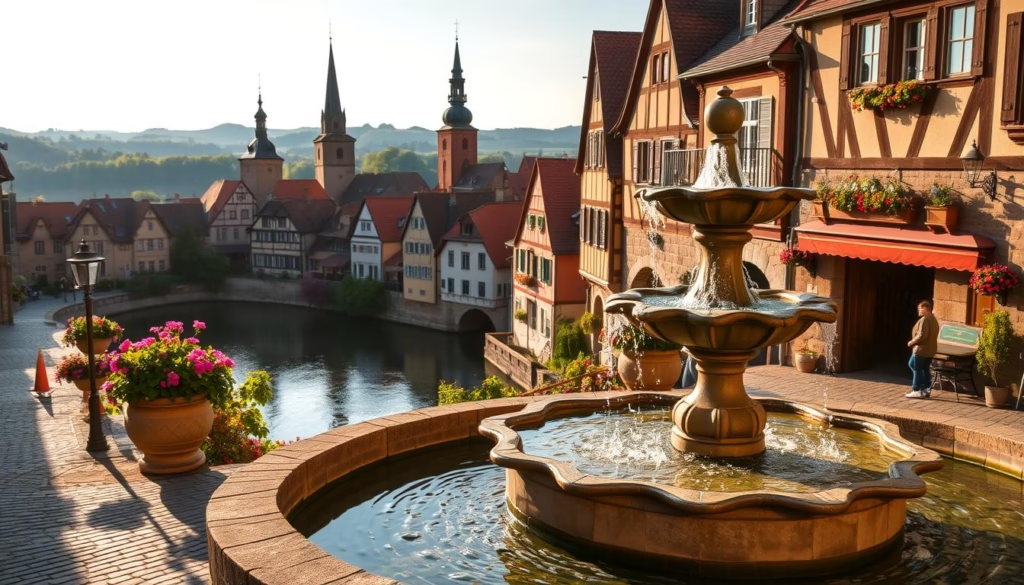
Medieval Walls and Market Square Mystique
Stroll along the town’s intact defensive walls—some sections date back 700 years. These elevated walkways offer views of red rooftops and the Tauber River valley. Locals joke that climbing the Town Hall Tower’s 241 steps burns off enough calories for extra Schneeballen pastries.
The market square buzzes with life beneath the Town Hall’s Gothic clock. Join free walking tours to uncover hidden details like iron shop signs from the 16th century. Pro tip: Arrive by 9 AM to photograph the iconic Plönlein corner without crowds.
History buffs love the Medieval Crime and Justice museum, where exhibits reveal peculiar punishments. For something lighter, the German Christmas Museum sparkles year-round. Stay at Hotel Reichsküchenmeister to sleep among antique tapestries in a 17th-century architecture masterpiece.
Rothenburg proves some places truly defy time. Whether you’re tracing ancient walls or savoring powdered sugar-dusted treats, this storybook escape lingers in memory long after departure.
Neuschwanstein Castle: The Story Behind the Fairytale
Few landmarks capture imagination like this 19th-century marvel that inspired Disney’s iconic castles. Perched above Hohenschwangau village, Neuschwanstein Castle blends Romanesque grandeur with Bavarian whimsy. King Ludwig II’s “escape from reality” features limestone towers piercing cloud banks and interiors dripping with Swan Knight motifs.
The location stuns at every turn—hike Marienbrücke bridge at dawn to see fog curl around turrets. Guides share tales of Ludwig’s extravagant vision, like his grotto room with artificial waterfall. For broader views, take the Tegelberg cable car to see how the castle commands the Alpine area.
This architectural wonder ranks among Europe’s most extraordinary official residences. Yet its magic feels personal—whether you’re tracing gold-leaf ceilings or hearing wind whistle through arrow slits. Visit by regional train from Füssen station, the perfect way to let the fairy tale unfold slowly.
